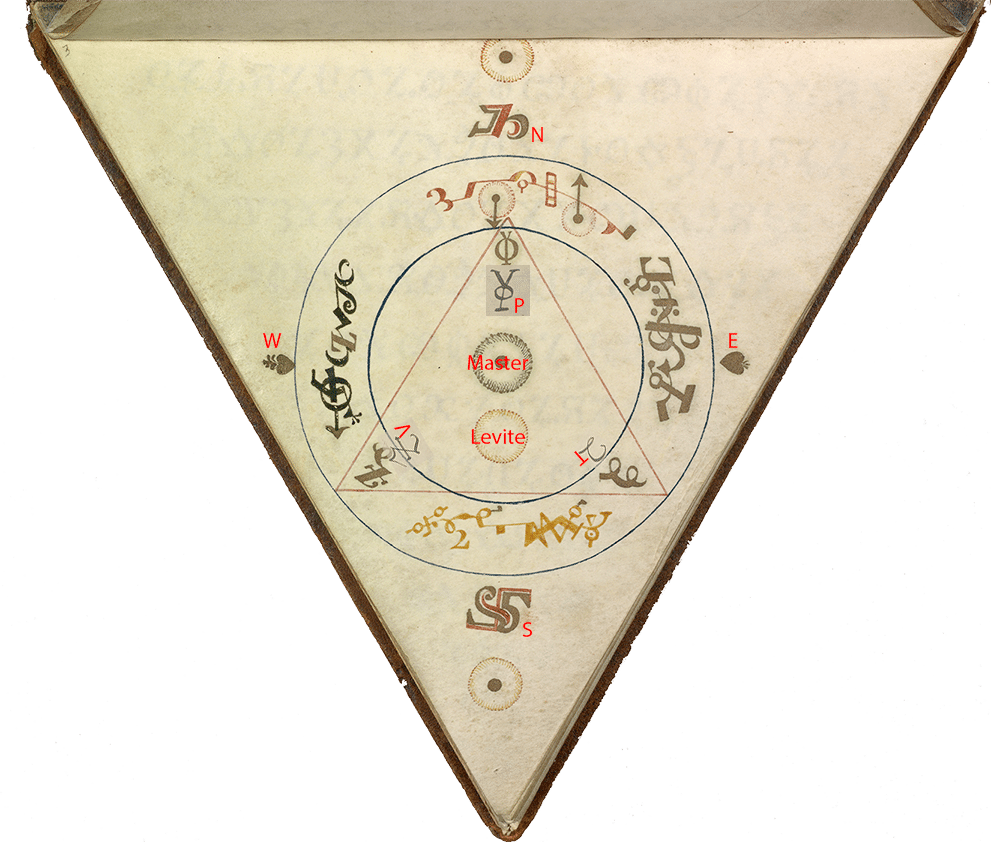The Circle, part three
Once again, we return to the ritual circle, and more precisely, the triangle within it. As you may recall from a previous post, we see three letters in the corners (going from bottom left to top center to bottom right): V, P, T.

These three letters represent the key words of an alchemical concept: Vita Prima Tria, the Three Vital Principles, introduced Paracelsus in the 16th century.
In essence, Vita Prima Tria suggests that all matter consists of three fundamental components or substances: Sulphur 🜍, Mercury ☿, and Salt 🜔. The simplest explanation of these concepts is as follows: if you take any living thing (such as a plant leaf) and subject it to fire, what burns is sulfur, what evaporates is mercury, and what remains behind is salt. In practical terms, you might think of sulfur as essential oil, mercury as alcohol, and salt as ash. On a more spiritual level, sulfur represents the soul, mercury the spirit, and salt the body.
While this idea was first developed by Paracelsus around 1530 in the context of spagyric (herbal) alchemy, it was continued by several other alchemists. His disciple, van Helmont, proposed a primary division of ice, water, vapor, and gas—different states of water composed of atoms, which were themselves made up of the three principles mentioned above.
Robert Boyle, a key 17th-century figure in the development of modern chemistry, was critical of Vita Prima Tria. His own experiments showed that decomposing substances with fire did not always produce three neat categories, nor were these substances consistently the same. Furthermore, he was frustrated by the vagueness in alchemical literature regarding these three terms. However, his experiments were based on alchemical teachings, and he is considered both the first modern chemist and the last alchemist.
In the context of the Triangular Book, we are left to wonder why its author decided to incorporate this philosophical and chemical element into what otherwise appears to be a magical ceremony. It could be that the triangle, as a symbol representing the foundation of physical existence, still adequately and succinctly embodies these principles. Imagine the complexity of the polygon you would need to symbolically represent a modern periodic table!

From a grimoire and ceremonial magic perspective, it's worth noting that a magician typically stands within a circle for protection and calls upon spirits to manifest themselves in a triangle outside that circle—serving as an enforced and somewhat unwelcome temporary dwelling place for such beings. In the Triangular Book, however, the circle and triangle overlay each other, suggesting an invocation or calling of forces directly into the operator.